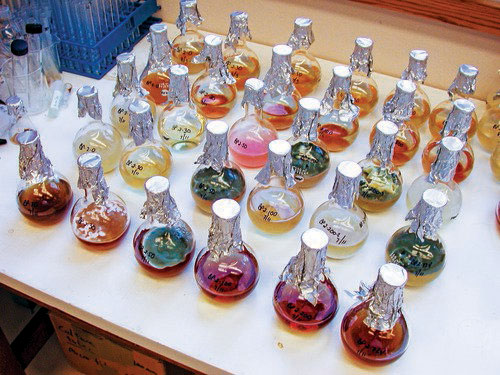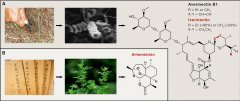Like most good mysteries, it began on a dark and stormy night.
On the morning of Nov. 14, 1995, residents of Butte, Montana, found hundreds of dead snow geese floating in the runoff and groundwater that had flooded a copper mine at the edge of town. A squall the night before had forced an emergency landing. When they were found, burn sores dotted their bodies, and their white feathers were dyed a sickly, jaundiced orange.
What happened to the birds wasn’t actually a mystery. They’d had the misfortune of landing on the toxic waters filling the remnants of what used to be one of Montana’s richest copper mines, the so-called Berkeley Pit. Now a Superfund site, meaning it’s designated by the US Environmental Protection Agency for toxic waste cleanup, it was filled with a deadly broth that had a pH (2.5) rivaling that of sulfuric acid. Water bubbling up from old mine shafts had seasoned the pit with copper, cadmium, and arsenic.
What was a mystery is how, months later, Andrea and Don Stierle found fungi and other microbes thriving in the pit, an environment so harsh and extreme it killed birds within hours. Nothing, experts said, could live here.
The Stierles had their reasons for looking. First, scientists were discovering life in other seemingly uninhabitable places, like undersea vents and the simmering rainbow cauldrons at Yellowstone National Park. Why not the Berkeley Pit? Second, the pit was literally in the Stierles’ backyard. They were then on the faculty at Montana Tech and didn’t have the grant money to look anywhere more exotic. And third, they knew organisms living in extreme environments like the pit would likely synthesize some rather interesting molecules. The same chemicals that were keeping these organisms alive under such crazy conditions might also keep humans alive when facing harsh maladies like cancer.
Their “What the hell? Let’s give it a whirl” attitude paid off as soon as they brought their samples back to the lab. Within days of streaking the pit water on the nutrient-rich agar that coated their petri dishes, they isolated several fungi. One was a yeast that arrived in the pit on the bodies of the snow geese and somehow survived.
“Most microbiologists told us yeasts do not grow at pH 2.5, so you did not find a yeast,” Andrea says. “I thought, ‘Well then, what is this?’ ”
Many scientists have been investigating the planet’s countless extreme environments, on the hunt for molecules that will inspire the next blockbuster drug or technological breakthrough. With some scientists estimating that less than 5% of fungal species and 1% of prokaryotic species on Earth are known, a lot of biodiversity remains to be explored.
The Stierles, now at the University of Montana, run one of the few labs looking at human-made extreme environments on this same quest. From abandoned copper mines in Montana and Vermont to a coal seam in Kentucky that’s been burning for half a century, natural product chemists have begun to identify potential new pharmaceuticals in the most unlikely of places.
“Extremely hostile environments are an evolutionary playground,” says Tomasz Boruta, a bioprocess engineer at Lodz University of Technology, in Poland. “Organisms need to evolve all sorts of new compounds to adapt to those harsh conditions.”
The researchers face an uphill battle long before they enter the competitive world of big pharma. For one, growing some of the extremophiles—organisms living in these environments—back in the lab can be difficult, if not impossible. Scientists can’t collect molecules from difficult-to-culture microbes readily. Drug discovery, then, must proceed by examining an extremophile’s DNA and searching for the telltale cellular machinery that makes such molecules. What’s more, selecting and identifying any promising molecule remains an expensive and arduous process.
Still, the chances that these tiny survivor organisms will yield useful molecules is high: the compounds they synthesize have to be potent and unique to help keep them alive. Though the work has yet to arrive at a doctor’s prescription pad, experts say that it’s probably only a matter of time until some of humanity’s biggest disasters begin to yield some lifesaving compounds.
“Microbial diversity is largely untapped,” says Barry O’Keefe, chief of the Natural Products Branch at the National Cancer Institute. “These new structures can inspire new syntheses. It pushes biology forward and it pushes chemistry forward.”
https://pubs.acs.org/doi/10.1021/cen-09718-cover





